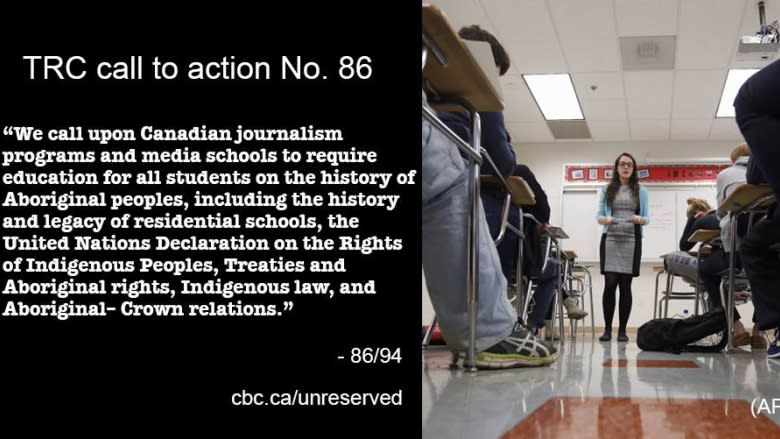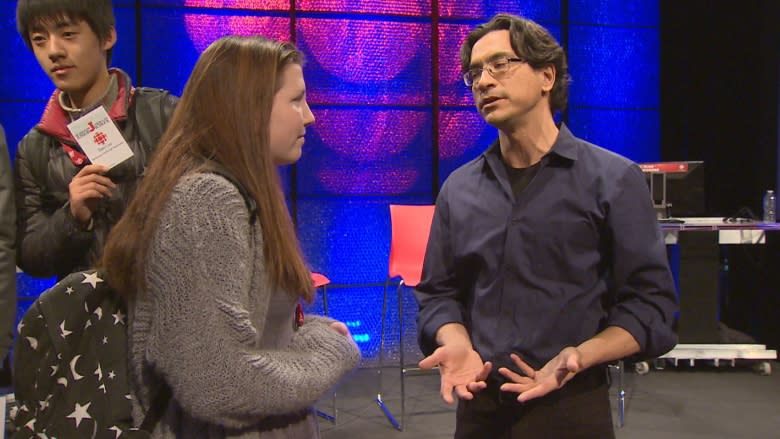Canadian journalism schools respond to the TRC's calls to action
Canadian journalism schools are trying to better equip their students to cover Indigenous stories, a response to the final report of the Truth and Reconciliation Commission, released one year ago.
The commission, tasked with investigating and commemorating the dark history of Canada's Indian residential school system, also issued 94 calls to action to "redress the legacy of residential schools and advance the process of Canadian reconciliation."
One of those calls to action is that journalism schools teach students about the history of Aboriginal Peoples, Indigenous law and treaties.
"Journalists, out of ignorance or something else, have unfortunately just not have done a good enough job covering those issues, and are probably reinforcing the status quo and negative stereotypes," said Janice Neil, associate chair of journalism at Ryerson University.
"I think journalism is supposed to be covering all of the people who live in this country and we haven't done a good enough job."
Ryerson University, Carleton University and University of Kings College are already responding to the TRC by adding Indigenous topics to their courses this fall. St. Thomas University in Fredericton, N.B. is also developing course material.
Not enough Indigenous journalists
However, some schools see a lack of Aboriginal reporters, professors and resources as an obstacle. Although Ryerson is offering Indigenous topics in its courses, it doesn't mean it will be taught by an Indigenous person.
"There aren't enough Indigenous journalists in Canada who are available to come in and teach," said Neil.
"This is something we have talked about it. It's something we should do," said Brian Gabrial, associate professor and former chair of Journalism at Concordia University.
"Because we are a smaller program we don't have a lot of committees and other things develop, we handle those and then we move on to something else."
Gabrial said Concordia hopes to make changes in the future, but in the meantime students are encouraged to take classes in the First Peoples department. Some students have also done work with the Eastern Door, a news outlet based in nearby Kahnawake, Quebec.
Critical tool
Journalism schools need to see value in teaching about Indigenous Peoples, said Duncan McCue, adjunct professor at the University of British Columbia. For the past five years, McCue has taught a course called Reporting in Indigenous Communities.
"We all know that the landscape is changing dramatically and that our students need to learn a huge variety of multimedia skills," he said.
"I would argue that [learning about Indigenous Peoples] is absolutely a critical tool for journalism students to have and know and understand how to operate in diverse communities."
McCue says Indigenous history should be just as important for Canadian journalism students as learning the latest multimedia application. Some institutions, like Carleton University, seem to be getting it.
"It's important that our students learn to cover any issue properly. That it's very important that they learn to cover indigenous issues and people in communities because for so long, it hasn't been the case," said Susan Harada associate director at the School of Journalism and Communications at Carleton University.
Strained relationship with media
As more students are learning about Indigenous Peoples, the better and more balanced the coverage will be, McCue argues.
He said media and Indigenous people in Canada had a strained relationship because of past news coverage and he points to stories about Dudley George and Oka as examples of the problems journalists have when covering First Nations issues.
"Journalists just don't understand the protocols and they don't understand the history and that means they go into First Nation communities without a full toolbox," said McCue. "And that's why we see a lack of depth in the coverage we've seen in the past."



